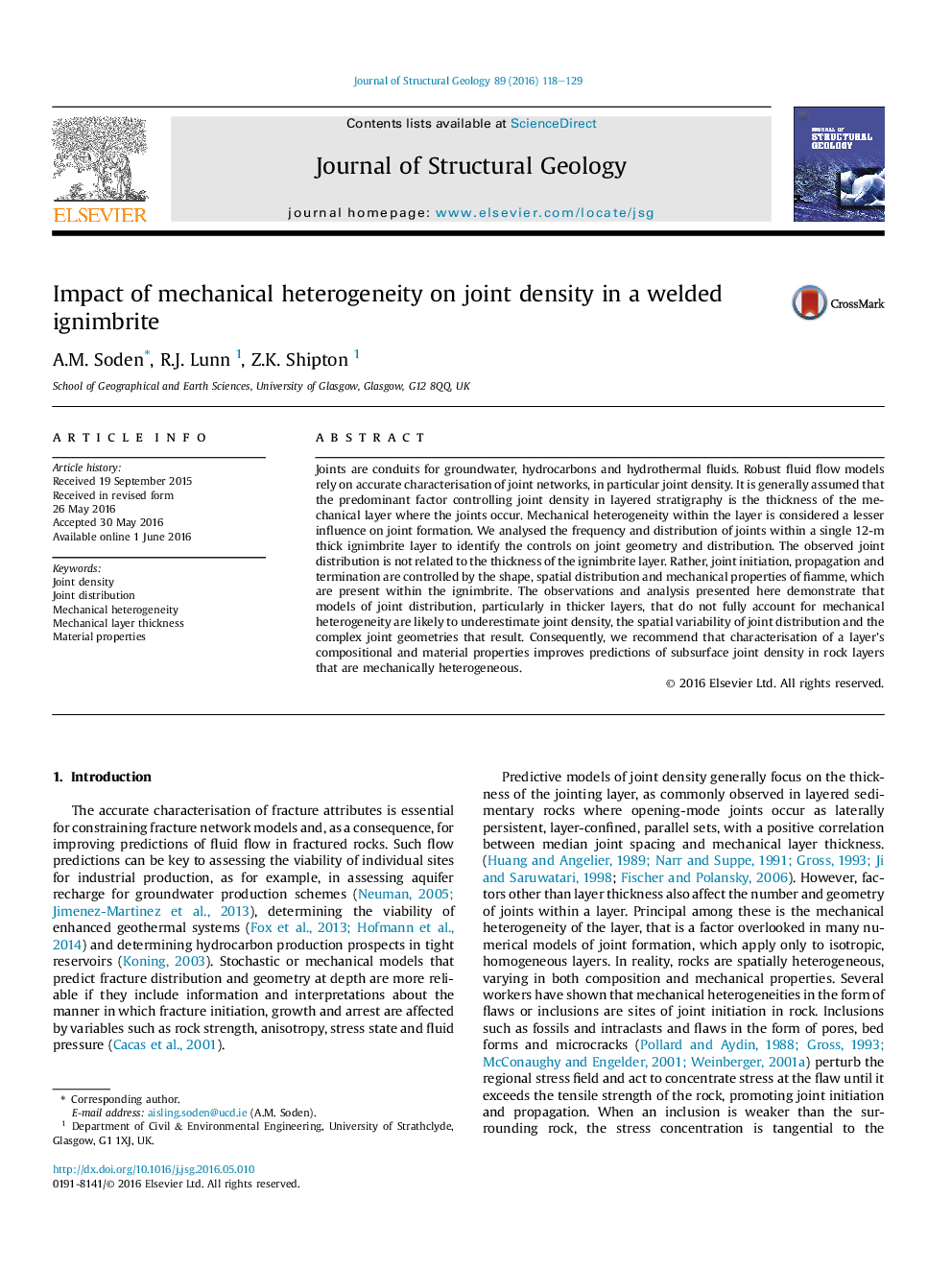| Article ID | Journal | Published Year | Pages | File Type |
|---|---|---|---|---|
| 4732950 | Journal of Structural Geology | 2016 | 12 Pages |
•We analyse joint density within a single 12-m thick ignimbrite layer.•We examine the influence of fiamme on joint frequency and distribution.•Geometrical and mechanical properties of fiamme strongly affect joint density.•Mechanical heterogeneity rather than layer thickness controls joint density.
Joints are conduits for groundwater, hydrocarbons and hydrothermal fluids. Robust fluid flow models rely on accurate characterisation of joint networks, in particular joint density. It is generally assumed that the predominant factor controlling joint density in layered stratigraphy is the thickness of the mechanical layer where the joints occur. Mechanical heterogeneity within the layer is considered a lesser influence on joint formation. We analysed the frequency and distribution of joints within a single 12-m thick ignimbrite layer to identify the controls on joint geometry and distribution. The observed joint distribution is not related to the thickness of the ignimbrite layer. Rather, joint initiation, propagation and termination are controlled by the shape, spatial distribution and mechanical properties of fiamme, which are present within the ignimbrite. The observations and analysis presented here demonstrate that models of joint distribution, particularly in thicker layers, that do not fully account for mechanical heterogeneity are likely to underestimate joint density, the spatial variability of joint distribution and the complex joint geometries that result. Consequently, we recommend that characterisation of a layer’s compositional and material properties improves predictions of subsurface joint density in rock layers that are mechanically heterogeneous.
Graphical abstractFigure optionsDownload full-size imageDownload high-quality image (140 K)Download as PowerPoint slide
